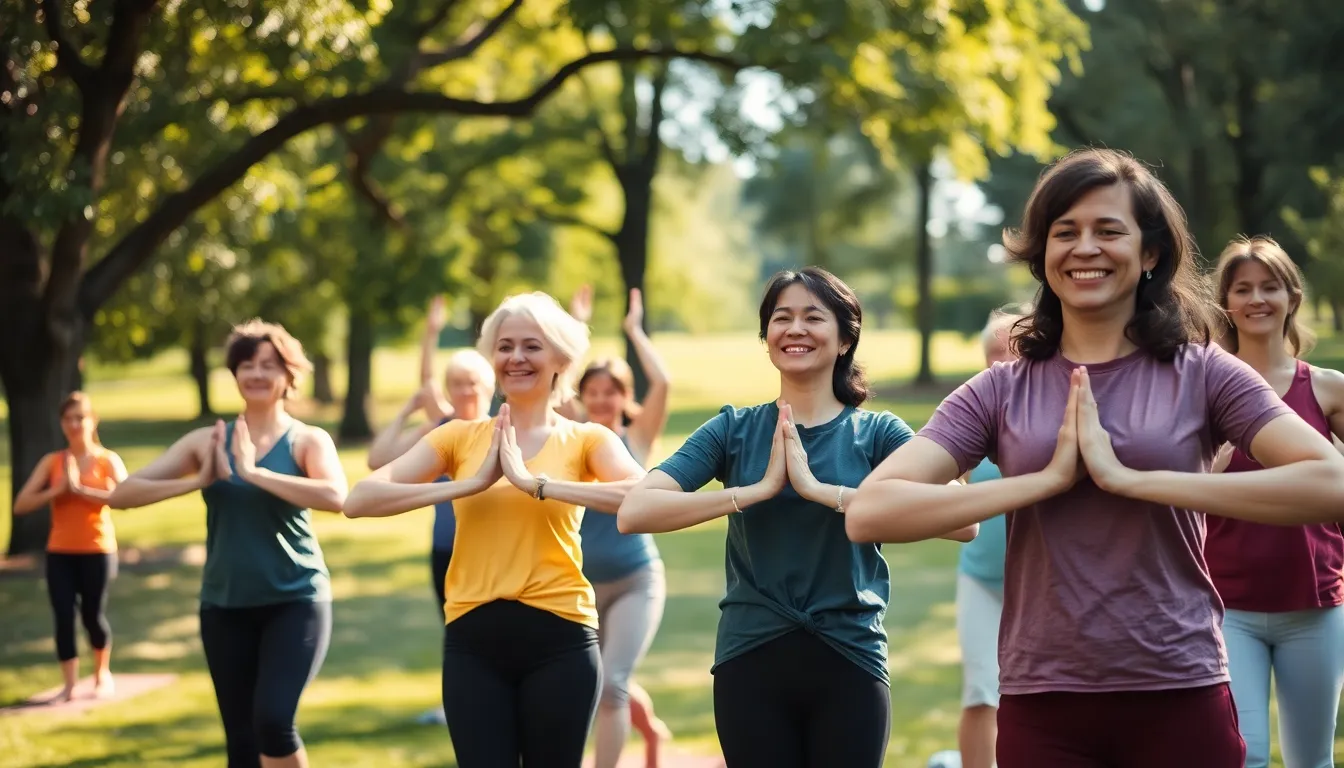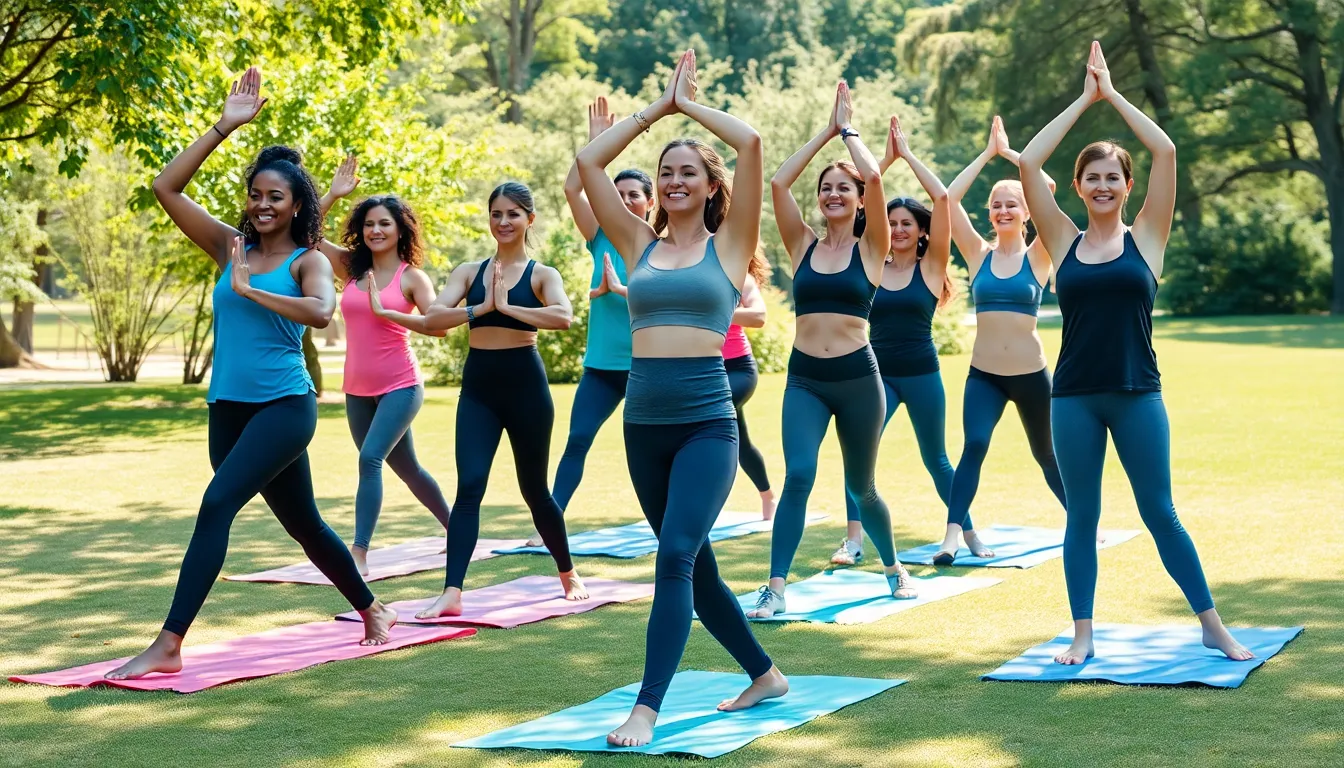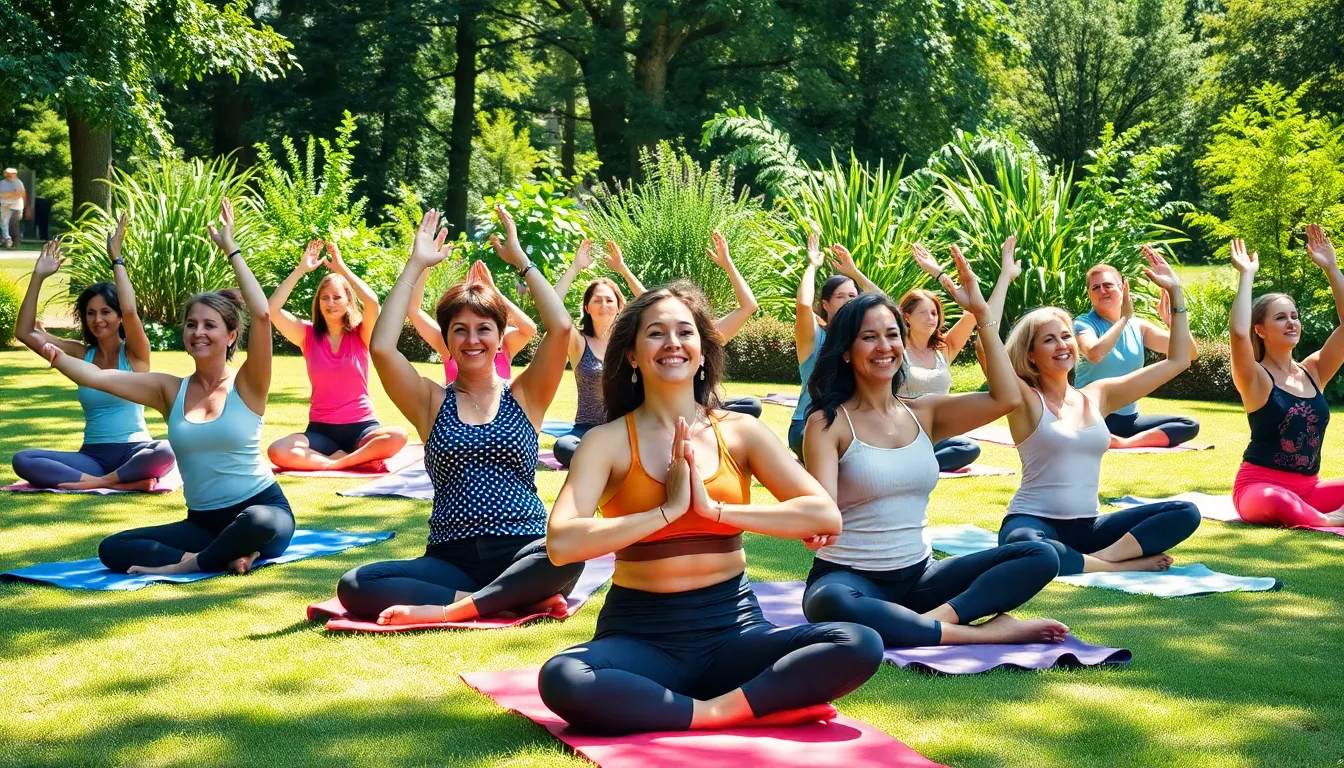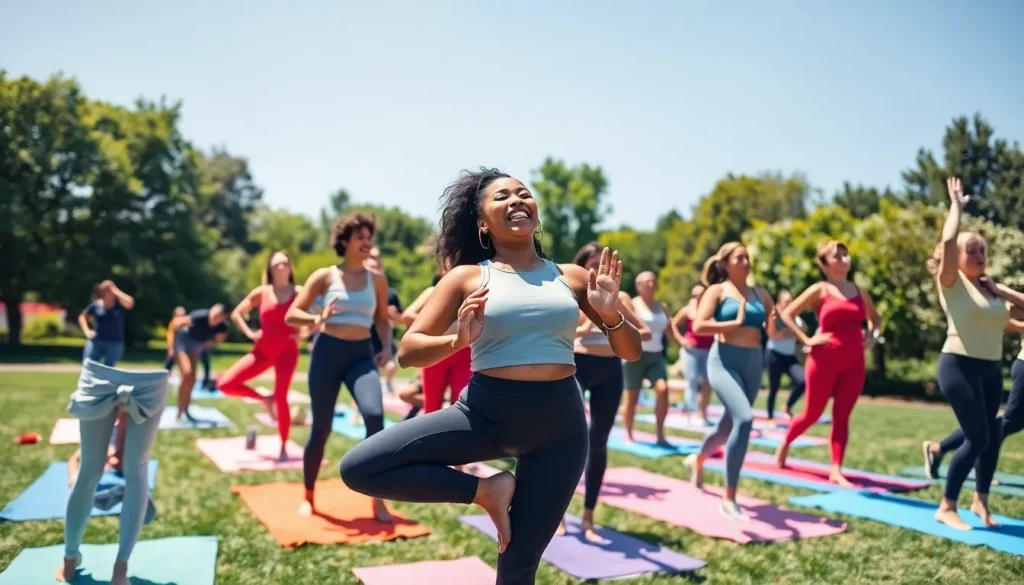Imagine a workout that leaves you feeling more like a zen master than a sweaty mess. Stress-free exercise isn’t just a dream; it’s the secret sauce to enjoying fitness without the dread. Gone are the days of grueling gym sessions and complicated routines. Instead, it’s all about finding joy in movement and embracing a more relaxed approach.
Whether it’s dancing like no one’s watching or taking leisurely strolls in nature, stress-free exercise invites everyone to join the fun. It’s not about lifting heavy weights or running marathons; it’s about discovering what makes the body feel good while keeping the mind light. So, let’s kick stress to the curb and dive into the delightful world of exercise that brings smiles instead of frowns. After all, who said getting fit couldn’t be a laugh?
Table of Contents
ToggleWhat Is Stress-Free Exercise?
Stress-free exercise focuses on enjoyable physical activities that promote well-being without the pressure of intense workouts. Emphasis shifts from rigorous training to pleasurable movement. Activities such as dancing or leisurely walks create positive experiences and foster attitudes toward exercise as fun rather than burdensome.
Engaging in stress-free exercise benefits both the body and mind. Movement increases endorphins, contributing to improved mood and reduced anxiety. Consider activities that allow individuals to connect with nature, fostering relaxation and mental clarity. Options like yoga or tai chi offer gentle movement while promoting mindfulness.
Finding joy in exercise encourages consistency. Regular participation in enjoyable activities leads to long-term benefits, such as enhanced cardiovascular health and increased flexibility. Engaging in social exercise, such as group classes or sports with friends, enhances enjoyment and accountability.
Stress-free exercise allows individuals to listen to their bodies. When learning to recognize physical cues, it becomes easier to engage in activities that suit personal preferences and fitness levels. Each person can explore various movement styles, identifying what brings them joy and fulfillment.
To prioritize stress-free exercise, individuals can set realistic goals that focus on enjoyment rather than performance. Tracking progress through how enjoyable an activity feels rather than strictly measuring metrics promotes a healthier relationship with fitness. Ultimately, embracing movement in its many forms cultivates positivity and excitement about physical activity.
Benefits of Stress-Free Exercise



Stress-free exercise promotes both mental and physical well-being. Engaging in enjoyable activities fosters a positive mindset and encourages a consistent exercise routine.
Improved Mental Health
Stress-free exercise significantly enhances mental health. People experience reduced anxiety when participating in enjoyable activities. Joyful movement releases endorphins, which boost mood. Practicing mindfulness through exercises like yoga offers clarity and relaxation. Social interactions during group activities foster connections, reducing feelings of isolation. Participants often report increased feelings of happiness and contentment from gentle, enjoyable exercises.
Enhanced Physical Fitness
Stress-free exercise also improves physical fitness. Individuals who engage in pleasurable activities maintain higher levels of motivation. Regular participation in enjoyable exercises leads to better cardiovascular health. Flexibility and strength increase through consistent, lighthearted routines. Activities such as dancing or hiking promote sustained movement without the pressure of rigorous workouts. By prioritizing joy in movement, individuals find it easier to reach and maintain fitness goals.
Types of Stress-Free Exercises
Engaging in various forms of stress-free exercise enriches physical and mental well-being. Below are several effective activities that emphasize enjoyment and mindfulness.
Mindful Walking
Mindful walking combines the benefits of movement with mental clarity. This practice focuses on awareness of each step, promoting relaxation. Participants observe their surroundings, allowing nature’s beauty to enhance the experience. Studies show that spending time outdoors can lower stress levels. A gentle pace fosters a sense of peace and connection with the environment, encouraging long-lasting benefits for both body and mind. Individuals can use mindful walking as a daily routine or a simple way to clear their thoughts.
Gentle Yoga
Gentle yoga emphasizes relaxation and stretches without intense physical demands. Participants benefit from breath-focused techniques that promote calmness and flexibility. Each pose encourages mindfulness, enabling practitioners to tune into their bodies. Research suggests that yoga reduces stress and enhances emotional well-being. Classes often cater to all skill levels, making it accessible for everyone. Practicing gentle yoga provides a supportive community, fostering connections and shared experiences.
Low-Impact Swimming
Low-impact swimming provides an excellent option for stress-free exercise, offering a buoyant environment that eases joint stress. When individuals swim, they engage in a full-body workout that promotes cardiovascular health and muscle strength. Water’s resistance creates a gentle challenge, enhancing fitness without overexertion. Many facilities offer lap swimming or water aerobics classes that encourage social interaction. The soothing nature of water can elevate mood, creating a calm atmosphere for relaxation. Participants often find joy in the rhythm of their strokes, making swimming an enjoyable way to stay active.
Tips for Incorporating Stress-Free Exercise
Incorporating stress-free exercise into a daily routine promotes enjoyment and well-being. By following simple strategies, individuals can make physical activity a fun part of their lives.
Finding the Right Environment
Choosing the right environment significantly enhances the exercise experience. Outdoor settings, like parks or gardens, provide fresh air and natural beauty, which can boost mood. Indoor spaces should be comfortable and inviting, filled with natural light or personal touches. Many people find that exercising with friends or groups creates a positive atmosphere, making workouts more enjoyable. Additionally, music plays a crucial role; upbeat tunes can elevate energy levels and transform mundane sessions into lively experiences.
Listening to Your Body
Listening to the body allows individuals to tailor activities to their needs and preferences. Regularly checking in with physical sensations helps identify what feels good and what doesn’t, guiding choices. When fatigue sets in, opting for gentler exercises ensures continuation without strain. Responding to feelings of joy during workouts can motivate further participation, while any signs of discomfort warrant adjustment or rest. Respecting personal limits fosters a healthier relationship with fitness, allowing individuals to explore different activities freely without pressure.





